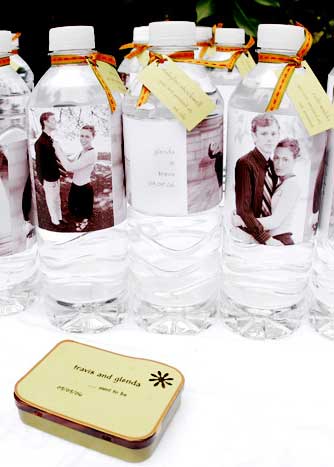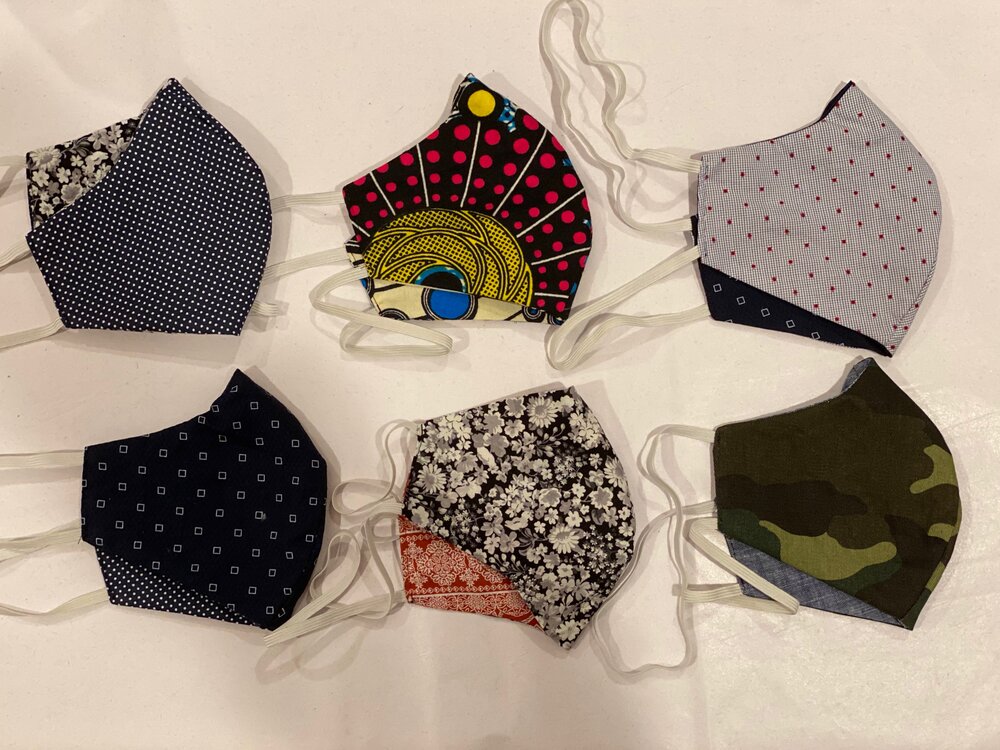 Series Blog #3
Series Blog #3
The average bride in the United States spends at least a year planning her perfect wedding day. The explosion of COVID-19 in North America in late February 2020 left brides and planners with just a few months to reimagine what weddings would look like in the post-pandemic world. Luckily, creativity is our forte in the wedding industry. Spring weddings came to a halt, but the wedding industry didn’t stop. We have spent the last few months doing what we do best: planning and creating!
If you’re getting married in 2020, there’s no question that some of your carefully laid plans will probably need some adjustments to make sure you and your guests have a happy and healthy day! Today we’re talking ceremony plans. With some careful planning, you can still have the ceremony of your dreams while keeping everyone safe. Below, we have ideas for every aspect of your ceremony.
Guests
Let’s start with the most important element of your wedding day – the special people you have chosen to be there to witness it! For the foreseeable future, guest lists for weddings will be more intimate; no more than 50. This can be a difficult conversation for some couples. Narrowing down your friends and family to the VIP list can be hard, but large guest lists make health and safety precautions much more difficult to plan and execute. Our main priority is to keep you and your guests safe and happy so that you can focus on enjoying your day.
We know you will probably have more people you want to invite than can realistically attend. For guests who cannot make it or are perhaps too at-risk to joining in person, we recommend a live-stream of the ceremony. Most videographers are able to provide this service as part of their package (and on that note, wedding videos are more important than ever for capturing and sharing your wedding day!).
Welcome

When guests arrive, they will be greeted by an attendant wearing masks and gloves to protect the guests. The welcome station will serve as a sanitizing station. Guests will be given masks and hand sanitizer before entering the ceremony area. Welcome boxes have been a popular tradition for a while for out of town guests, and they are usually left at hotel desks. We think a great twist on this tradi tion would be an update for the current times is to bring the Welcome Box to the ceremony. We know, masks and hand sanitizers don’t really scream romance, but you can give them an elegant upgrade by packaging them in pretty boxes or gift bags that have the added bonus of cutting down on touchpoints between guests and attendants. Other ideas to include in the boxes would be water bottles, programs, or fans for a hot day. Brides who really want to upgrade their welcome boxes can have them customized with their monograms or wedding design. Everything from the packaging to the masks themselves can match the theme of the wedding so as not to take away from the aesthetic you want.
The guest book is an important tradition to a lot of brides and grooms, but the conventional pen and book format has a lot of touchpoints between guests, so it’s best to skip them for now. However, if your heart is set on a guest book, we do have some fun ideas for non-traditional guest books that reduce the risk of guest exposure.
For couples who would like guests to have their temperatures taken before attending the wedding, this can also happen at the welcome station. We recommend recruiting a family member or a member of the bridal party to complete this task in order to make guests feel more comfortable.
We often recommend water stations are provided for guests before and during ceremonies, especially if they take place outside on a warm day. To cut down on touchpoints for guests, instead of a self-serve water station, we will have a gloved attendant passing out bottled water to guests.
It is also important to have a seating chart at the welcome table to let guests know where they should sit (more on this in the next section). The attendant can help them find their seat.
Photos courtesy of Alba
Seating
Seating is the trickiest part of the ceremony due to social distancing, but we have some ideas to allay any uneasiness guests may be feeling. Ceremonies will have assigned seating with guests from the same household seated together, six feet apart from the next group of guests. Seats will be labeled, but we will also have ushers (either from our staff or a member of the bridal party) seating guests to make sure they are not sitting in another guest’s seat. In an outdoor setting, we can get creative with the seating configurations and have the rows farther apart. Inside a house of worship with less flexible seating, we will only seat guests in every other row and not directly behind another group.
.jpg) Photo by Braja Mandala Photography
Photo by Braja Mandala Photography
Procession
While bridal party size goes in and out of fashion, small bridal parties will be a must this year. The more individuals included in the procession, the more difficult it is to keep physical distance. When the bridal party comes down the aisle, they will walk one at a time in order to keep six feet distance unless they live together. Instead of standing at the altar behind the bride and groom, they will be seated in the first row. While children are often included in bridal parties and can make for some funny and special memories, we recommend that they not process during the ceremony given their unpredictability. They can still pose for a great photo op during the portraits! On this note, although it is often the tradition for a ring bearer or the best man to deliver the rings to the groom at the appropriate time, we recommend the groom keep the rings on his person the entire time to avoid any possible contamination. To avoid the bride having to hand her bouquet to others during the ceremony, we will provide a small table near her position at the altar for her to rest her bouquet on.
Cultural Ceremonies
.png)
The above suggestions cover general wedding ceremonies, but if you come from a rich cultural or religious background, you may be wondering how to accommodate them for our current health and safety concerns without losing their sacred and sentimental meaning. In general, the best thing to do is to minimize the number of people involved as much as you can. Luckily, we specialize in ethnic and cultural weddings. For more specifics, we have outlined some ideas below.
In the Persian wedding ceremony, some of the guests need to participate and touch some of the same items as one another. One example would be the Ghand Sabi. In this ritual, happily married women rub sugar cones, called Kaleh Ghand, over the heads of the bride and groom to symbolize showering their union with sweetness. To keep this tradition without putting anyone at risk, we suggest having guests wear gloves or ask only members of the same family to participate. Hand sanitizer will be available for guests to immediately sanitize their hands before returning to their seats.
Photo by Bryce Covey Photography
.jpg)
For an Indian ceremony, there is typically lots of participation from family members on the mandap, as well as at least one priest, making physical distancing a challenge. Because the mandap is such an ornate and elaborate focal point, we suggest a decorated sanitizer available on the mandap so if anyone is touching the same items they can make sure to sanitize their hands before and after. Try to work with the priest to minimize the number of people involved in the ceremony. An option is to build the stage and mandap
.jpg) structure larger than usual so parents from both sides do not have to sit too close to one another. Alternatively, you can position only the bride, groom, and priest on the stage and have family come up as needed to participate.
structure larger than usual so parents from both sides do not have to sit too close to one another. Alternatively, you can position only the bride, groom, and priest on the stage and have family come up as needed to participate.
Indian ceremony, there is typically lots of participation from family members on the mandap, as well as at least one priest, making physical distancing a challenge. Because the mandap is such an ornate and elaborate focal point, we suggest a decorated sanitizer available on the mandap so if anyone is touching the same items they can make sure to sanitize their hands before and after. Try to work with the priest to minimize the number of people involved in the ceremony. An option is to build the stage and mandap structure larger than usual so parents from both sides do not have to sit too close to one another. Alternatively, you can position only the bride, groom, and priest on the stage and have family come up as needed to participate.
Photo by Katie Beverly Photographer
.jpg)
.jpg)
For Jewish ceremonies, we suggest having the rabbi wear gloves so when they touch the kiddish cup from which the bride and groom will drink so that there is no risk of cross-contamination.Jewish ceremonies, we suggest having the rabbi wear gloves so when they touch the kiddish cup from which the bride and groom will drink so that there is no risk of cross-contamination.
In the Catholic mass, parishioners are accustomed to taking wine and wafers as communion. Under the new guidelines, churches are not offering wine and wafers are placed into the hands of the attendees instead of directly into their mouth.Catholic mass, parishioners are accustomed to taking wine and wafers as communion. Under the new guidelines, churches are not offering wine and wafers are placed into the hands of the attendees instead of directly into their mouth.
.jpg)
Photos by Paula Luna Photography
The realities that COVID-19 has brought to wedding day arrangements are unavoidable, but with careful planning and a little creativity, you can still have the day of your dreams!
We did this blog series in collaboration with a select group of industry experts. Be sure to read them in the below order. The next blogger in the series is Meridian Events
Planner Power Perspective Links:
Blog 1 – Dress Shopping By Ink And Rose Events
Blog 2 – Wedding Day, What To Expect Upon Arrival By Events By Cassie
Blog 3 – Wedding Ceremonies During Pandemic By Nahid Global Events
Blog 4 – Cocktail Hours During Pandemic By Meridian Events
Blog 5 – How Reception Service May Change For Weddings During Pandemic By Ebeling Events
Blog 6 – How Receptions May Change Aesthetically During Pandemic By The Blushing Details
Blog 7 – Cancelling Or Postponing Your Wedding By Kiss And Say I Do & Perfect The Events
Blog 8 – Wedding Day Insurance Coverage By Dee Lee Designs







